Small Laptops
There was a time when even the most basic computer filled an entire room and weighed over a ton. Luckily for us, technology moved on and 50 years later and the ‘laptop’ as we know it emerged on the market. Initially, the price was so high that only large companies and the rich could ever hope to own one. Over the years, Laptops got faster, lighter and less expensive for the average consumer, but only in the last half a decade have any significant changes been made to the basic laptop shape and size.This new form of ‘small laptop’ combines the power of a regular sized ‘notebook’ laptop with the added portability of even smaller devices such a Palmtops, PDAs and the newer range of cellphones.
However, with this new technology comes a whole host of decisions for the consumer. How much power do you need from a portable device? Do you need a keyboard? How much battery power will you require? How heavy is the system? The list goes on. When it comes to choosing a portable device everything from design quality to operating system needs to be considered, especially when you’re handing over a large sum of cash for the privilege!
To help with your decision, we’ve taken a look at some of the best small laptops out today, reviewing their features and discovering which provide the best overall set of features, value and portability.
ASUS EEE PC 1000H
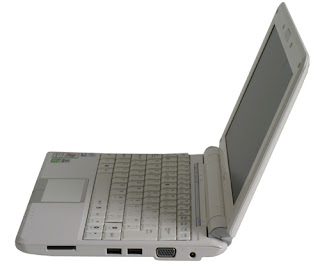 Screen Size: 10”
Screen Size: 10”Battery Life: 5 hours
Operating System: Windows XP
Weight: 3.2lbs
ASUS’ EEE PC range was a key playing in the birth of small laptops only a few years ago. Early models were limited by their small solid state drives and reliance on using Linux as the primary OS to keep the price down. Initially, the EEE PC was designed with only the most casual users in mind, but a shift toWindows XP as well as a full upgrade of just about every aspect of the old model has seen the 1000H bring Asus back to the forefront of the small laptop market.
Technical specs of the laptop include a 10 inch screen with integrated 1.3 MP webcam, Intel Atom CPU and a 160GB hard drive, all powered by a 6-cell battery.
One of the bigger criticisms of the old EEE PC range was that at seven inches, the screen was just too small to effectively display web pages and other forms of content that are increasingly designed for large, widescreen displays. Further problems relating to size included thekeyboard being too small for fast typers with large hands to keep up their natural speed on the system.
The 1000H has changed that. Yes, it's still at the lower of what most consumers would consider a small laptop, but the jump to 10" has increased usability tenfold. It allows users to not only take full advantage of the sharp and vibrant LCD display but also keep their typing speeds up by a much more spaced out and sensibly designedkeyboard. Even the touchpad has been improved and made more ergonomic and responsive.
It's the little features that make the 1000H stand out on the cutting edge of small laptops. The "Super Hybrid Engine" technology allows you to switch between 3 different CPU speeds which enhance the systems portability. Writing a word document? Set your CPU speed to 1.2 GHz and save battery life. Watching a video file? Set your CPU speed to maximum and take full advantage of the Intel Atom's speed.
Add to this an integrated card reader, webcam, free office suite and even a button above the keyboard that can change your resolution and you have a very complete hardware package. As small laptops go, battery life is slight above average performing for about 4.5-5 hours under heavy load. It's advertised at 7 hours, although it’s unlikely you'll get close to that unless you leave the laptop on idle.
With prices ranging between $400 and $600 depending on your technical requirements, the N1000 is one of the best deals amongst all thesmall laptops . It doesn't specialise in anything particular and its battery life might be a letdown for some, but its budget price tag and attractive arrange of features make it a front line contender for casual users.
HP Mini 1000
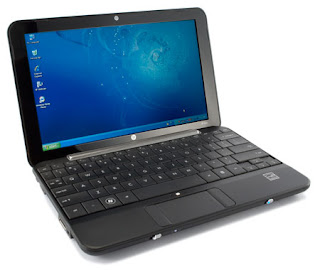 Screen Size: 8.9” / 10.2”
Screen Size: 8.9” / 10.2”Battery Life: 3 hours
Operating System: Windows XP / Linux (Ubuntu)
Weight: 2.5lbs
HP’s last small laptop offering was the 2133. It was an interesting attempt at the market with an excellent control interface and keyboard. Unfortunately, use of a budget processor and a high price range meant the system couldn’t quite cut it amongst its competitors at the time. The Mini 1000 is HP’sconsumer answer to the 2133, lifting the excellent keyboard straight from the business model while upgrading the CPU to the much more powerful Intel Atom.
The Mini 1000 runs on Windows XP, uses a 1.6 Ghz Intel Atom processor and comes with 1Gb or 2Gb memory options as standard. Nine or ten inch screens are available depending on preference and price range, and everything is powered by a standard 3-cell battery. The 'Mini' version of the range runsWindows XP but the 'Mi' runs Ubuntu Linux complete with proprietary HP media software. Hard drive options include a spinning 60GB drive or an 8/16GB solid state solution.
Like most HP machines, the 1000 stands out in the small laptop market for both its stylish design and light weight form factor. HP thankfully swapped out the metal chassis from the 2133 with plastic - it looks cheaper, sure, but you also save money and in weight in the swap. The laptop remains attractive once opened with an excellent use of the limited space on offer.
The amazing thing about the Mini 1000 and the thing that many people considering purchasing a small notebook should consider is the size of thekeyboard. HP claim the keyboard on the 1000 is 92% of the size of a regular laptop keyboard. That's quite an achievement, and in terms of typing if nothing else, the 1000 is the best in the market . This makes the HP product perfect for people who have had a bad experience with key mashing or pain when using other small laptop keyboards.
The 10 inch display model offers the standard 1024x600 resolution seen in many small laptops. As with much of HP's laptop range, the screen is covered in gloss which makes the display look fantastic - inside. Outside on a sunny day you'll be constantly trying to adjust the screen to avoid reflection, a shame considering it does limit the portability of the device somewhat.
The only thing that lets the 1000 down slightly is the rather confusing decisions HP has made with the systems ports. The 1000 has 2 USB ports and only one port for audio. There's actually plenty of room for the extra ports but HP has decided to use the space for a proprietary system called 'Mini mobile drive'. Mini mobile drive is nothing more than a high capacity memory stick that you can only buy from HP, and we can't see any reason why most small laptop users would ever find a use for one.
The Mini 1000 retails from $500 depending on your options with the 'designer' Vivienne Tam edition selling for a ridiculously high $700+. We recommend grabbing theWindows XP 'Mini' range over the 'Mi' as the extra money you have to spend on Windows gives you so much more software options. An extend battery might also be on the cards for some users as the 1000 uses a 3-cell system that will only last around 2.5 hours under heavy use.
Sony VAIO VGN-P588E Lifestyle PC
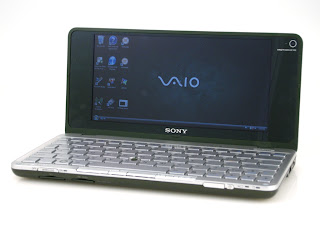 Screen Size: 8”
Screen Size: 8”Battery Life: 2.5 Hours
Operating System: Windows Vista Home Premium
Weight: 1.4lbs
Wow, that's a bit of a mouthful, isn't it? It's a rather pretentious name for what is essentially just another small laptop, but then the Vaio range has always been one for style and design following just behind apple in desirability ratings. It’s popular amongst people with the disposable income to afford to pay for the brand as well as the components.
And there's no denying that the P5's design is excellent. It's stylish without being loud. It’s thin and elegant. It looks like no other small laptop onthe market , so if you're after some visual originality, the P5 has to be right up there with anything Apple can offer. It comes with a price tag to match the design however, weighing in it over a thousand dollars.
The Sony model opts for an 8 inch widescreen display, offering a resolution of 1,600 x 768, slightly different from the usual notebook standard. In fact, it's one of the best resolutions around for a system of its size and because the screen is so wide, there’s far less chance you'll have to worry about scrolling.
Sony's small laptop is also unusual in its decision to use a pointing stick rather than a touch pad to save space. Some people really dislike pointing sticks and find them slow and difficult to use, while others actually prefer them to a touchpad.. The keyboard is adequate and doesn't have any major faults, though as one of the smaller laptops in this list the lack of space does making typing quite a challenge for those with big hands.
One rather confusing design decision was the move to Windows Vista as opposed to more lightweight systems like Linux or XP. The P5 comes equipped with 2GB of ram, but where better operating systems would fly Vista feels slow and cumbersome. It's important to weigh in the resource load of the operating system when directly comparing system technical specifications. Of course, the eye catching design of Vista fits very well into the P5’s own visual attractiveness.
Extra features are what make the P5 stand out amongst cheaper competitors. It has .11n wireless which is faster than standard, GPS, Bluetooth and even integrated mobile broadband. This makes it highly connectable which is a massive bonus for a portable device. Combine this with its weight and fact it's less than inch thick and it's one of the best devices out there in terms of pure portability.
The battery life of the laptop is the only crutch on portability, offering just over 2 hours under heavy use. You could probably get more out of the system by swapping to a less battery draining operating system. Sony also offers a larger capacity battery that nearly doubles the life of the system, but it does stick out of the P5 and it costs another $100 on top of the already heavy price tag.
Asus N10J-A1
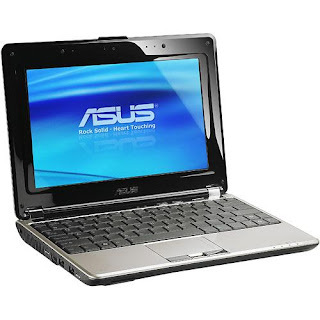 Screen Size: 10.2”
Screen Size: 10.2”Battery Life: 4 Hours
Operating System: Windows Vista Home Premium / Windows XP
Weight: 3.5lbs
On the surface the N10J looks like just about every other small laptop around. It's not got any particular design features that stand out; it runs a similar chip, OS and ram options. It's small, lightweight and portable. What really makes the N10J stand apart from its competition is on the inside: a dedicated 3D graphics chip.
Gamers have always had to sacrifice a lot when they move to portable systems. Firstly, a laptop is always more expensive than the equivalent desktop system. Secondly, upgrading is more difficult. Thirdly, heat from a separate graphics card can be a major issue. That doesn't mean there isn't any practical use or market for the world of small laptops to get in on the gaming action however, providing you are realistic about the systems abilities.
The dedicated graphics chip is a relatively powerful GeForce 9300. The genius of the system is that it also has integrated graphics, so when you're not gaming you can turn off the high powered graphics and save massive amounts of battery life. Other features are fairly standard such the Atom CPU and 160GB hard drive. The screen weighs in at 10", large than most small laptops but a good compromise for gaming. Unfortunately games aren't designed with small laptops in mind, and you'll find yourself limited by the awkward 1024x600 resolution.
Connectivity is good with Bluetooth included as standard. There's also a DVI port which is another first in the small laptop market and an excellent addition considering that the N10J is all about graphical ability. Don't forget that plugging the system into a larger monitor and trying to run games at that monitors resolution is unlikely to gain any decent results. The graphic card isn't designed to cope with the resolution of every day monitors.
The system runs on Windows XP though a Linux powered quick launch environment is available from boot. This gives you access to both a web browser and a media player, handy for quick use or times when battery life is a high priority.
XP is by far the best choice for a portable operating system that focused on gaming, and it works well with the GeForce card. Gaming performance isn't exactly cutting edge, but you shouldn't expect it to be for a system weighing around 3 pounds. What it does offer is a device that’s more than capable of playing popular games like The Sims and World of Warcraft out of the box. A basic rule of thumb is that most games over 3 years old will work great on the N10J. Anything newer will be hit or miss and the newest games simply won’t run.
Thanks to the switch which turns off the high powered graphics card and a trademark ASUS 6-cell battery offering, the systems battery life is very good. For people that really can't leave PC gaming behind when they have to leave the house, it's pretty much the only option in the small laptop world right now. Luckily, it's a good one.
Samsung NC10
 Screen Size: 10.2”
Screen Size: 10.2”Battery Life: 5 Hours
Operating System: Windows XP
Weight: 2.8lbs
Samsungs entry to the market is the exact opposite of some of the niche systems we've already run through, sharing more in common with the EEE PC line - it's powerful, small and focuses on doing simple tasks as well as possible. Thanks to this focus on simplicity, the NC10 remains an excellent contender despite doing nothing 'special'.
The Samsungs design is piratical and uses a 10" screen. From the outside it looks like the epitome of a standard small laptop. It's not stylish but nor is it over-the-top, and it could easily be mistaken for just about every other non-descript small laptop on the market.
One of the ways the NC10 does differ from other models is that there are no options in terms of changing any of the specifications. There's no Linux version, no different CPU speeds, no option for a solid state drive. It offers a standard Intel Atom N270 configuration running at 1.6 GHz, 1GB of ram and a 160GB hard drive.
Control on the system is hit and miss. The 10" size has made the keyboard large and easy to use even if it's not the best on offer. However, the touchpad is awkwardly placed and oddly unresponsive. Worse still, Samsung have taken the rather odd design decision to make a 'widescreen' style touchpad which makes vertical scrolling a somewhat ardous task.
The systems Matte display runs at the 1024x600 and looks appealing and crisp, although it would be hard to differentiate between the NC10 and offerings from ASUS or Dell in terms of pure screen quality. Sound offers a similar 'adequate' quality without providing any real power. The integrated 1.3MP webcam however does stand out as one of the best in the world of small laptops and combined with a decent microphone it's a great system for talking to friends over the net.
Battery life is one of the few absolute standouts of the NC10, featuring a 6-cell standard battery that even beats out contenders like the EEE PC. Depending on the tasks and the brightness of the screen, the system can last for around 5 hours. The NC10 is also priced perfectly; at around $450-$500 - slightly cheaper than many of its direct competition.
HP Pavilion Dv2
 Screen Size: 12.1”
Screen Size: 12.1”Battery Life: 3 Hours
Operating System: Windows Vista Home Premium
Weight: 3.8lbs
With an impressive technical list that sounds more like a regular sized laptop but a small form factor and light weight to rival a small laptop, the DV2 is HP's answer to the problem of size vs. power. For many people who are turned off by the idea of small laptops, it could well be the solution if you are looking for a system capable of demanding tasks that won’t break the bank or your back.
A standard Dv2 features some pretty nice specifications for its form factor, far in advance of anything seen amongst the 10" netbooks. The standard Intel Atom processor is replaced by a similar speed Athlon Neo, 4GB ram and ATI Mobility HD 3410 graphics. Unlike most small laptops, the system runs on a 64 bit version of Windows Vista. It also features all the usual standard options of a regular 14" laptop such as DVD-RW drive and a 320GB hard drive. There's plenty of room for manoeuvrability and customisation in the design although obviously things can get quite expensive with the higher-end options.
The DV2 is a departure in design for HP moving away from the standard pavilion look and feel. This could be seen as a bad thing considering pavilion range is well known for its excellent design. Luckily everything feels just as smooth and compact as ever. Some things haven't changed though, the DV2 offers the same catch less design as other trademark HP laptops. Intelligently, the 6-cell battery is actually hidden at the back as a hinge for the screen.
The keyboard is standard laptop size and with the exception of the fiddly function keys, very easy and comfortable to use even for extremely long periods of time. Even people with bigger hands should have no problem at all with the keys which feel solid and responsive. The touchpad is equally well designed although its reflective surface feels a little slippery when compared to some other models.
As with most models in the pavilion range, the screen is absolutely excellent with sunlight reflection and a limited viewing angle being the only concerns. For the most part, the glossy screen and it's 1280x800 resolution are perfect for everyday use.
For connectivity Wi-Fi and Ethernet are supported as standard as well as three USB ports, similar to what you'll find on a well fitted small laptop. There's also an external HDMI to complement the VGA port, great for people interested in connecting the laptop up to a TV that doesn't support VGA. For extra battery life, wireless is controllable via a switch on the side of the system.
The overall speed of the system is let down slightly by a single core CPU that the 4GB of ram can't compensate for, even on a 64bit operating system. Comparing it to the same speed Intel Atom however the Athlon processor is considerably faster. As far as overall performance is concerned, the Dv2 falls into the useful category of being faster than a netbook but not quite as fully featured as a similar priced full sized laptop.
The 512MB graphics card also makes the Dv2 a good choice for gamers, with the system easily capable of running fairly modem games such as Bioshock on medium-low settings on the Dv2’s native resolution. Price wise, the system will set you back around $750-$800, depending on options. It's an excellent deal if you need to combine portability with power and other small laptops simply don't offer enough for you.
Apple Macbook Air
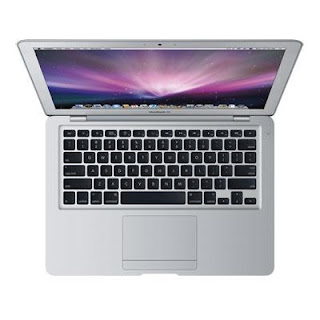 Screen Size: 13.3”
Screen Size: 13.3”Battery Life: 2.5 Hours
Operating System: Mac OS X
Weight: 4.5lbs
The Air is alone on this list for being a small laptop of slightly different dimensions. It's actually a 13" system making it the biggest we've looked at so far. What makes it still qualify as a small laptop? It's incredibly thin and light, ideal for people that travel often. You may well have seen the high profile Mac adverts which involve putting the laptop into envelopes and other such small spaces. It's also incredibly sexy compared to just about every other 13" laptop around. Do the looks justify the price, though?
The 13" screen on the Air is a real head turner. Combined with its full sized and spacious keyboard it's got none of the problems of mistyped words or lack of screen real estate as many of its competitors do. It's also uses an Intel Core 2 Duo rather than the much slower Atom CPUs used in other small laptops.
The Air has been hailed by Apple as a 'no compromise' portable machine, although it's clear that have been a fair amount of compromises in apples quest to provide a 13" system that isn't much more difficult to carry around than a standard netbook. Power will be definite issue for some with the laptop lasting just over 2 hours on heavy use. Luckily, the power adapter doesn't add much more weight to the laptop. Providing you aren't going to be away from a power source for long it's fine. It does limit the systems portability somewhat though.
There's also rather limited audio capacity, awkward USB ports and no DVD drive. Netbooks might not include DVD drives either but it's worth noting that an equivalent netbook would be far, far cheaper than that Air. Shortcomings aside however, what most people are looking for in the Air isn't a long list of technical specifications - they're looking for a Mac that offers them a similar level of functionality as the rest of the small laptop world but with software they are familiar with.
The Air uses Leopard as its primary operating system and it's just as usable and attractive as it is on a full size Mac. There are no significant changes to the system except for a gesture based control system using the Air's generously sized touch pad. The gestures allow you to move your hand in a certain way to complete a task and could save a lot of time once you've properly learned them all. Also included is a 'remote disk' application which allows you to use a limited form of DVD sharing from a host computer. This is a good option for those not willing to pay the extra $100 for the DVD drive attachment. The software is intelligent and useful for installing applications or reinstalling the operating system, but it can’t be used for streaming content like DVD movies.
The best and worst thing you can say about the Air is simple; it's a Mac. Most people will instantly love or hate the machine just because of this. Its price and hardware offer little to make PC fans consider the Air as an option. However, its sleek design and use of Leopard as its primary operating system will entice Mac users who are looking for a more portable option the larger and heavier Macbook Pro range. Prices range from $1400 - $2000 depending on the model.
Lenovo IdeaPad U110
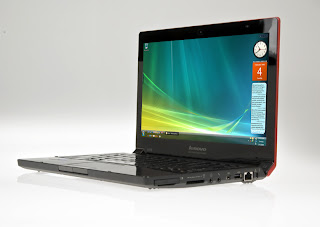 Screen Size: 11.1”
Screen Size: 11.1”Battery Life: 3 Hours / 1.5 Hours (depending on battery)
Operating System: Windows Vista Home Premium
Weight: 2.42lbs / 2.92lbs
The Lenovo is perhaps the PC world's answer to the Macbook Air. It's incredibly stylish, thin and lightweight. Its 11" screen strikes a good balance between screen size and weight. Its size makes the system one of the smallest 'ultrathin' laptops, only an inch bigger than the larger netbooks. Despite weighing only 3.1 pounds with its 4-cell battery included, the U110 is one of the most sturdy feeling machines around thanks to its aluminium cover and case.
With the size comes an interesting 1366x768 native resolution which allows the laptop to fit an impressive amount of onto its small screen. The display is sharp and bright. Unfortunately the screen is very reflective much like many of its competitors, so while it looks great at the right angle, it's far from ideal for using in direct sunlight. 1,366 is also a high resolution for an 11" screen so everything appears quite a bit considerably smaller than you might be used to on other small laptops. Despite all this, the overall design and clarity of the screen make up for any real shortcomings of the system.
The Lenovo’s option to use a low-voltage version of Intel’s trademark Core 2 Duo chip means the system isn't as fast as some of its competitors, but it still outweighs netbooks by a long way. This is quite an impressive feat considering the size of the system which manages to run Vista with very few problems. There's also plenty of connectivity on the U1110 with three USB ports, mini firewire and an express card slot. The only major drawback on the connectivity side is the same as those faced by Macbook Air users - no internal DVD drive. The difference with the Lenovo is that a DVD drive is provided within the cost of the system rather than as a separate accessory.
Battery life on the U1110 is quite unique. The Lenovo actually ships with two batteries, a lightweight 4-cell and a heavier but much longer lasting 7-cell. The larger battery lasts a full 3 hours but the 4-cell only manages around 1.5 on heavy load. The difference between the two batteries means you are likely to find yourself using the 7-cell far more often. However, it's an excellent design decision to give the user some choice when it comes to how heavy the system is.
There's not a lot of choice outside the world of batteries however, the U110 comes in a single configuration with all the advantages and drawbacks that brings. Finding drivers for the system is much easier because there’s only one set of hardware but it means you can't include many of the higher-end options you might see on many of the systems competitors. There's no option to replace the 120GB spinning drive with a solid state alternative for example.
The Lenovo weighs in at around $1300 and there are some options to upgrade the 2GB ram higher if you find the right store. The Lenovo is a system that takes the great looks of the Macbook Air and hands it to Windows users for nearly half the price. However, the lack of DVD drive and use of a slower Intel chip make it slightly less functional than a larger more complete system.
Dell Latitude E4200
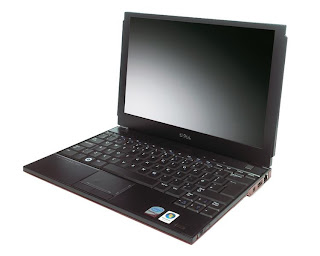 Screen Size: 12.1”
Screen Size: 12.1”Battery Life: 4 Hours
Operating System: Windows XP / Windows Vista Home Basic / Windows Vista Business
Weight: 2.2lbs
Dell has recently released an incredibly lightweight and portable system named the Adamo, which boasts some fairly impressive design detail and interesting specifications. The reason it isn't in this list is because it's priced ridiculously high even for a small laptop. For those looking towards Dell, the latitude remains as ever the best choice between value and performance, and the E4200 is no different.
The E4200 is slightly more of a professional system than some of the others we've looked at, and this ethos is echoed in the systems design. It's bold, practical and refreshingly angular in a world that's obsessed with curves. It's also one of the most solid systems we've seen and at 12" this is quite an accomplishment. It may not hold up to companies like Lenovo, Sony or Apple when it comes to style, but it's not ugly either. The only stumbling point some people may have is that the systems 6-cell battery sticks out from the back of the system quite a long way. It sounds worse than it looks, though!
For a 12" laptop it's quite surprising to not see an optical drive installed, and the options provided by Dell are expensive and not including in the base price of the system, which will be a turn off to some. There's also no integrated webcam which is a standard for most small laptops released today, although perhaps not a necessity for most users. It's an interesting thing to exclude considering the business focus of the E4200, but a webcam wouldn't have fit amongst the bezel on the top of the system.
The E4200 features a high quality full sized laptop keyboard and a responsive touchpad, not surprising considering solid and tactile controls have become a trademark of the modern Latitude range. The system is very configurable so if you want to save money by removing features such as mobile broadband you've got the option.
One of the more unique features of the E4200 is its secondary OS. Yes, it’s not uncommon in small laptops, but it's usually reserved for the much smaller netbooks and it's refreshing to the see the OS in a larger system. Much like most instant-boot secondary systems, Dell's 'Latitude ON Reader' provides a much longer battery life than Vista could hope for while giving users quick access to the internet, instant messaging and document viewing.
Battery life on the system manages around 4 hours on heavy load, quite an impressive result considering the size and brightness of the screen. The SSD only drive makes the system speedy even using a comparatively slow 1.4 GHz CoreDuo CPU. Combined with its sturdy design and excellent software options the E4200 is a stunning choice, provided you can live without a DVD drive. Prices range from $1000 - $2000 depending on the wide variety of options available.
Sony VAIO VGN-TZ11MN
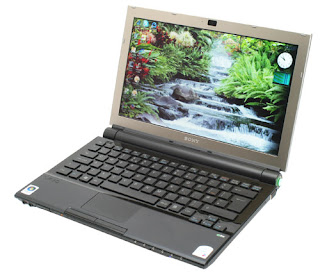 Screen Size: 11.1”
Screen Size: 11.1”Battery Life: 5-6 Hours
Operating System: Windows Vista Home Premium
Weight: 2.6lbs
Sony's offering to the world of ultrathin laptops isn't quite as visually attractive or unique as their 'netbook' offering but it's one of the best out there in terms of overall features including one of the most commonly excluded features on most small laptops: a fully capable DVD drive.
The design on the TZ1 isn't exactly ugly; it just doesn't stand out amongst its competitors in the way people who are familiar with the Vaio brand might be used to. One of its more unique design features is the keyboard, which features spaced out keys similar to those seen the Macbook. This style was actually first created by Sony themselves nearly five years ago. It's not a bad keyboard although many people find the spacing between keys more annoying than practical.
The 11" screen is without doubt one of the best around, running in a 1366 x 768 resolution which is commonly seen in HDTV. This makes it the only system in the list to achieve a real 16:9 ratio making it perfect for watching films. And of course, watching DVD movies is something you can actually do with ease on the TZ1 compared to the vast majority of competitors that offer, at best, an external DVD drive option. In fact Sony goes a step further and provides DVD and CD playback on the system without even having to boot up windows, saving considerable battery life on a task that's well known for quickly draining power.
The system boasts full AV media controls as well as Firewire and 2 USB ports. There’s integrated Bluetooth support but despite an express card slot, there's no integrated mobile broadband support.
The Core 2 Duo that powers the system runs at 1.06 GHz per core and provides enough juice to sufficiently power the system although it’s slightly slower compared to some of the newer small laptops on this list. However, base installs are let down by including only 1 GB of ram, not enough to run Vista without slowdown. Luckily the machine supports up to 2 GB and most stores are selling the system as such. Despite Vista, machine battery life is excellent giving about 6 hours of power under heavy usage.
An amazing screen and internal DVD drive set the VAIO apart from its competitors, so if you need a small laptop that's capable for business use but also performs well as a media system, the TZ1 could be a very good choice. The TZ1 is one of the older systems on our list so prices have fallen since launch, averaging at around $1600.
Conclusion:
As we've seen already there are two major problems in the world of small laptops. Firstly, to make them as small and portable as possible features are eventually axed, be it DVD drives or faster CPU speeds. Secondly, the price of components makes many small laptops a particular sticking point for many, especially during a recession.
Luckily the market has expanded considerably in the last few years giving consumers not only an excellent array of different sizes and styles of laptops but also a massive variation in budget, from as low as $300 to as high as $2,000. People might argue over the system we have or haven’t included in our list but one thing is for sure: there has never been a better time to take the leap into portable computing than right now.
<
No comments:
Post a Comment